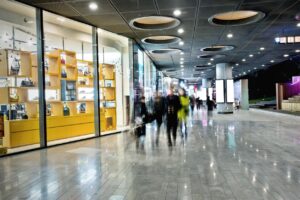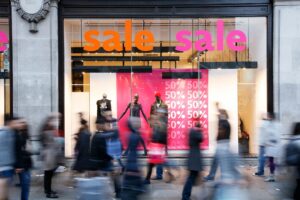Digital transformation has been a big issue for a while, but it’s been tough and impressive to see how quickly offline businesses have had to digitize their sales and operations owing to competition and the numerous changes the web has brought about.
“Just like in the rest of the world, Digital transformation has an impact on every facet of retail. The in-store experience is being streamlined by brick-and-mortar retailers integrating digital technologies, according to Hillary Cullum, founder of the retail consultant HSC Advisors.
“Better and cleaner data is having the most impact on our clients, who historically do the majority of their business in physical retail. After 2020, when the digital transformation will have fully taken hold, these brands, particularly retailers, will have access to a wealth of demand signals. Simply by being able to track and quantify what their customer desired since she typed it into the search, says Katharine McKee, founder of digital commerce firm Morphology Consulting, “this is enhancing selection, store allocations, and open-to-buys.”
Transforming the In-Store Experience
“A second but equally significant influence is the transfer of some of the beauty and adaptability of the digital environment to physical spaces. These are all significant improvements to the in-store experience where a customer can touch and feel things and be at ease with their use. Live streaming fashion shows, beauty courses, and VR home furnishings so you can see what fits in your space and looks beautiful are other examples. It is a more opulent touch, McKee continues.
With digital transformation at the center, Amazon will bring its first high-tech retail experience to The Americana at Brand in Los Angeles. There will be no need to physically look for particular sizes because display goods will have scannable QR codes that can be used to ask for sizes to be delivered to fitting rooms or picked up immediately. Along with many other improvements, interactive fitting rooms will let clients order extra sizes or styles without leaving the space.
We will all be paying close attention to the innovations Amazon is testing in its first real clothes store, which will let customers order items online to have them ready for them in the changing room and access user feedback. According to Cullum, these in-store technologies are assisting in fusing the physical and digital worlds.
Emergence Of Q-Commerce
Q-commerce, sometimes known as quick-commerce, enables customers to receive deliveries within an hour of placing an order, usually for smaller transactions. This on-demand delivery is quickly gaining popularity as it satisfies consumers’ need for immediate pleasure.
“From an e-commerce standpoint, the most popular trend right now in retail is speedy online shopping. Next-day shipping from the main supermarkets was particularly popular towards the start of the pandemic. Then came q-commerce, according to Marta Subko, CEO of the digital marketing firm subko&co. “In 2022, getting products delivered to your door will only need two clicks on one of the various q-commerce apps and 15 minutes of waiting. Nowadays, it seems nearly impossible to leave the house without spotting a delivery worker.
Busy lifestyles, urbanization, smaller homes, COVID-19, and an aging population are the five primary causes fueling the rapid expansion of q-commerce, according to GlobalData, a top data, and analytics business.
Revamping the Older Systems with digital transformation
With the complete digital transformation of the retail sector, organizations now have access to an abundance of data that offers considerably more insight than was previously possible.
“Older solutions, like BOPIS (buy online, pick up in store), that have been around since but had little uptake because processes weren’t great are improving as retailers obtain that blended data. It has advanced significantly now that manufacturers and merchants have ironed out the wrinkles, according to McKee.
Brick-and-mortar retailers are repurposing their locations when foot traffic declines, whether it be by expanding their stockrooms to accommodate online orders or using their storefronts to hold live shopping events. Additionally, there are benefits to doing so. For instance, live shopping gives businesses a lot more information about potential customers than merely coming into a physical store to explore and then frequently leaving without interacting with the point-of-sale computer and providing no personal information.
Metaverse And Gamification
Whether it’s immersive virtual worlds, exclusive digital goods, or gamification of the retail experience, the endless environment of the Metaverse offers businesses limitless choices. This creates a completely new method for customers to buy.
Luxury is becoming more intriguing and accessible to consumers who are constantly online, thanks to Web 3 and the Metaverse. A new class of purchasers searching for a more distinctive experience and some fun when they shop has been attracted by the gamification of the purchasing process and the inclusion of products in video games, according to McKee.
“Virtual reality technologies that enable virtual try-on of apparel and makeup are dramatically enhancing e-commerce. According to Cullum, the opportunity for customers to “try on” products before making a purchase is increasing conversion and fostering customer trust.
The Digital transformation in retail technology landscape is rapidly changing, additionally, from the viewpoint of both employees and consumers. Companies can use this technology for remote training and onboarding because it allows coworkers to practically be in the same room and see each other in real time with VR headsets.
In the Metaverse, there are now countless opportunities for retail and fashion to play. The only valuable asset is no longer just physical goods, continues Cullum.
Our Word
Digital transformation is here to stay. Retailers must make the pickup procedure as frictionless as possible as in-store pickup grows increasingly popular. Finding the pickup counter or standing in line to pick up the order are both inconvenient situations that have a negative effect on the customer experience and reduce consumer loyalty. Walmart is one retailer that has advanced in this area. Customers can use a code to get their orders from the company’s conveniently located pickup towers at the front of the store. The procedure is easy, quick, and convenient, freeing up the buyer to finish any necessary in-store buying.







